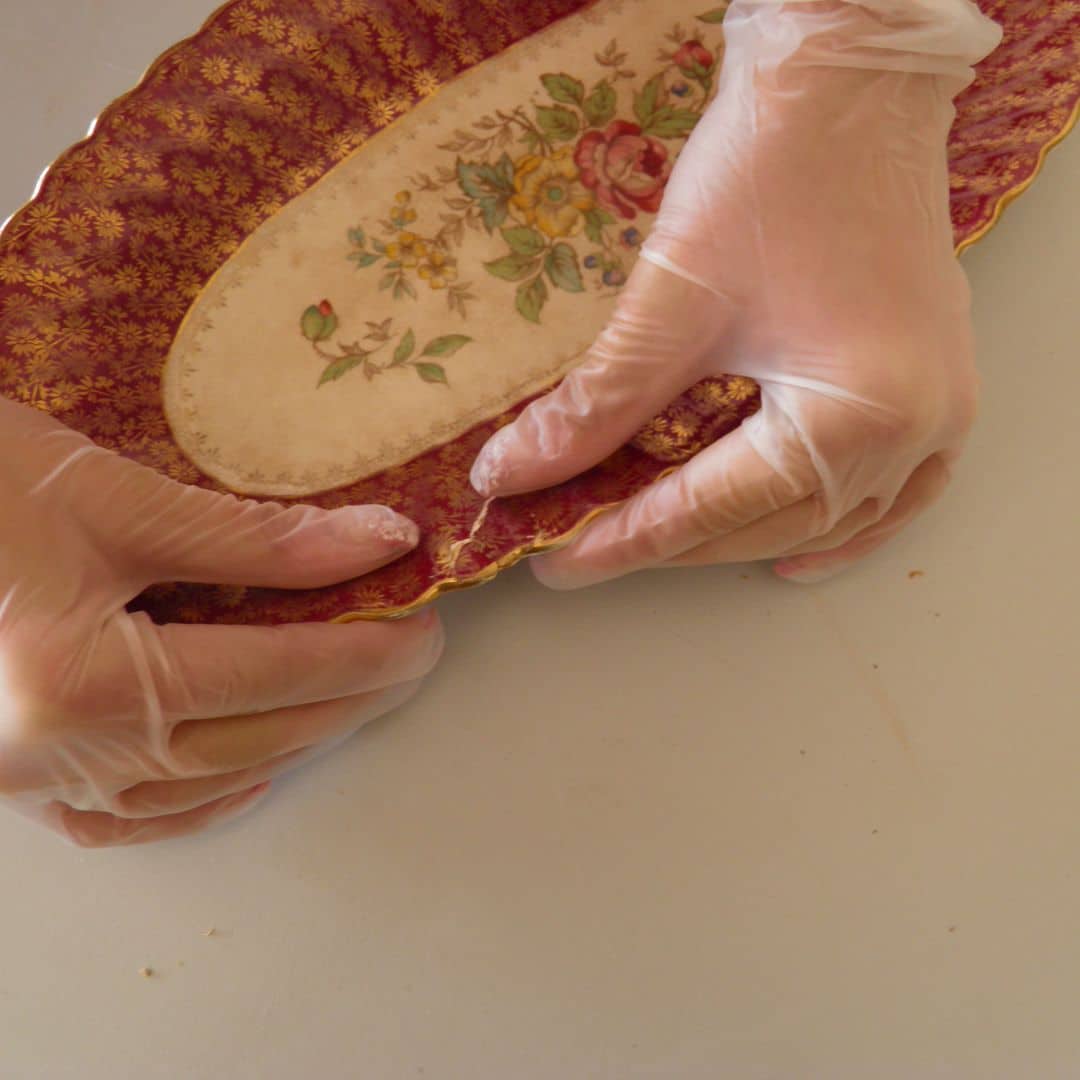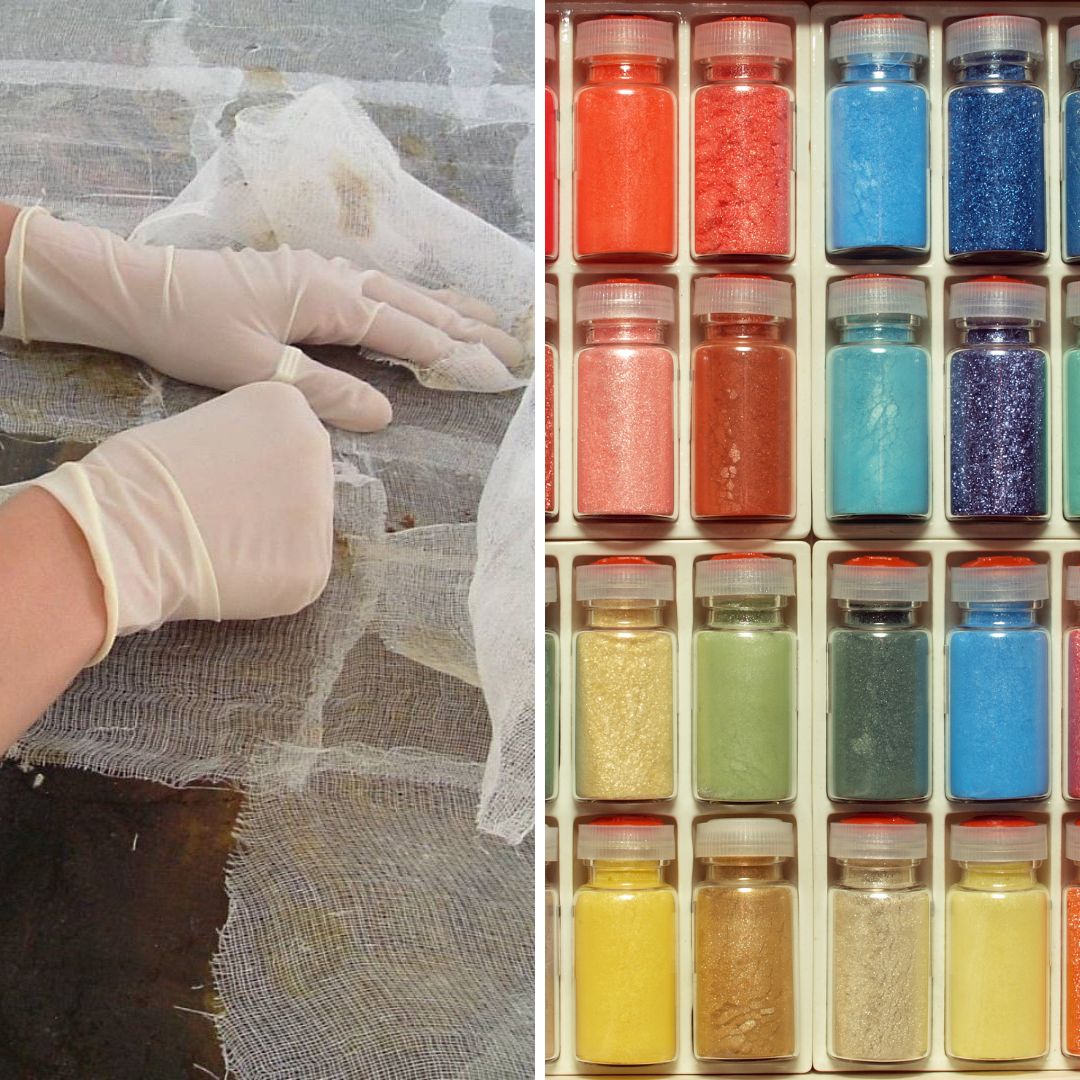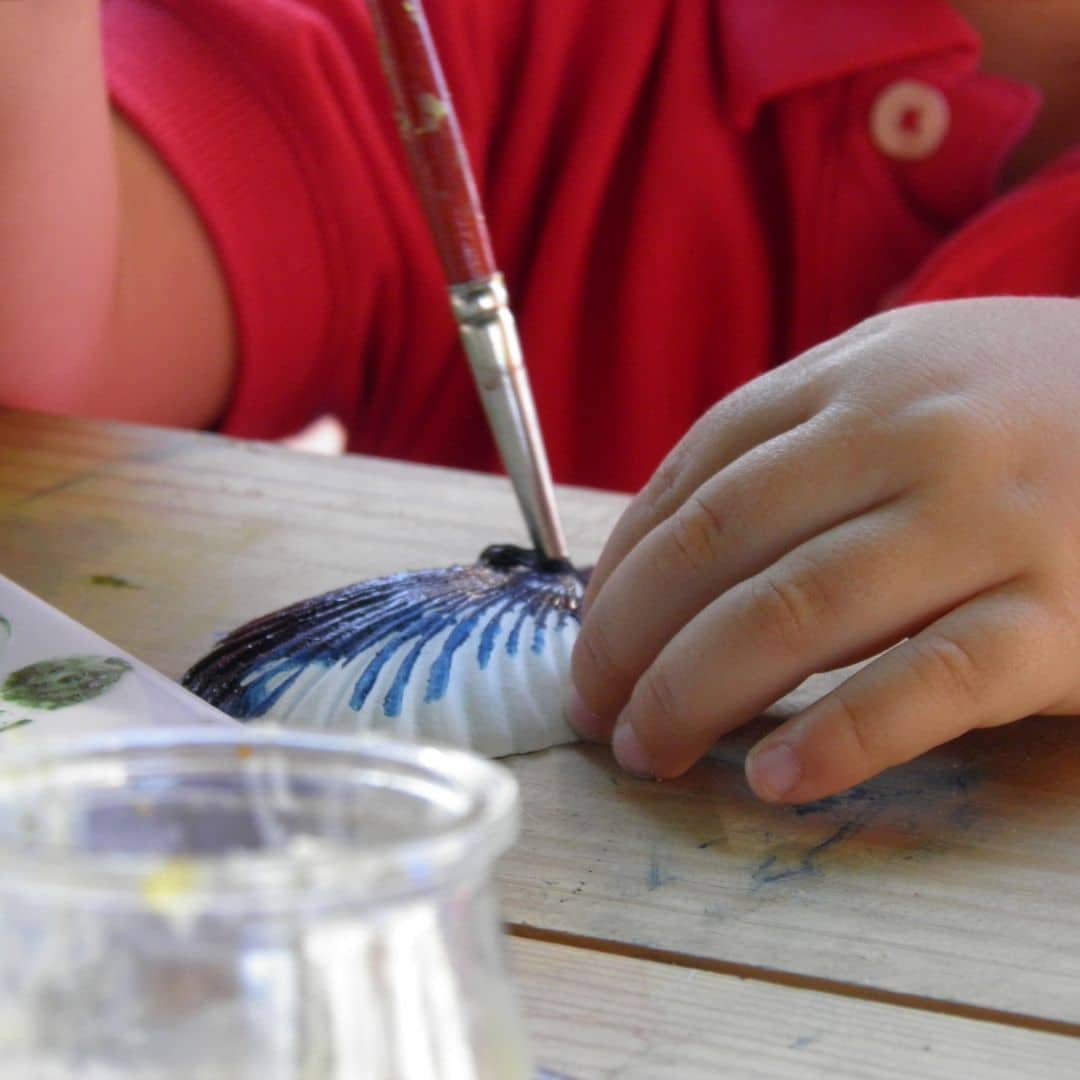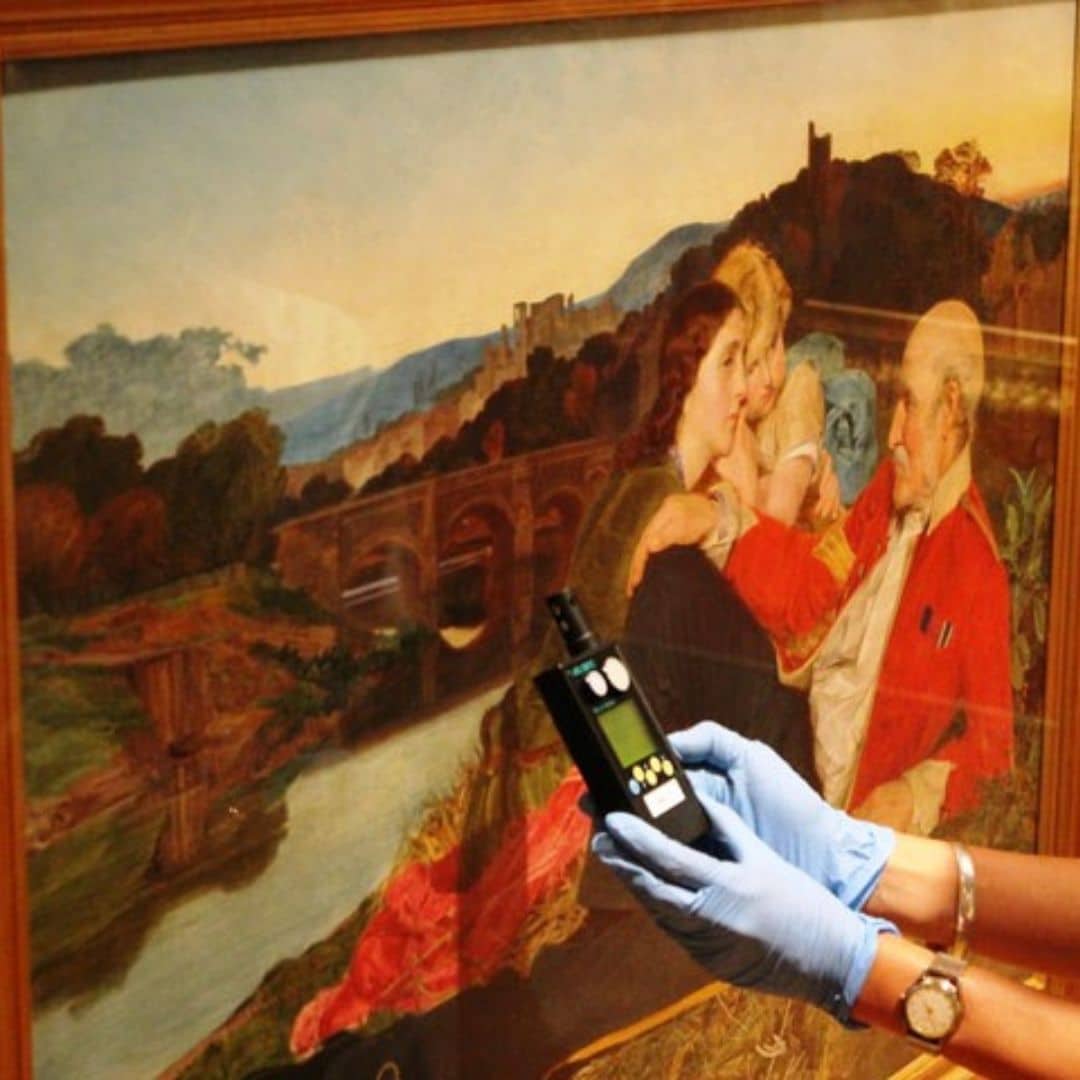To restore porcelain we will always have to go through what is one of the most important processes: cleaning porcelain .
In this article learn, step by step, the process of cleaning porcelain .
It includes a video tutorial.
You can also read this post in Português | Español.
This article is a short excerpt from the online certificate course Conservation of Ceramics.
The Conservation of Ceramics is certificated. You can check Citaliarestauro.com certification HERE.
Cleaning porcelain
We usually look at cleaning porcelain as an easy and simple process.
But, when dealing with antique pieces, cleaning is one of the steps we have to pay more attention and take more care when restoring porcelain or ceramics.
This is a very common operation in the conservation and restoration treatment, however, it is one of the most delicate because it is an irreversible treatment.
Everything that is removed with this process can never be restored.
What is cleaning as a restoration intervention process
The concept of cleaning includes any action aimed at removing any type of dirt or stain that interferes with the aesthetics of the piece or its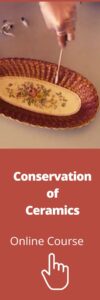 original integrity.
original integrity.
This is a very common operation in conservation and restoration treatment.
However, it is one of the most delicate because it is an irreversible treatment.
That is, what is removed with this process can never be restored.
Depending on the type of dirt, the nature of the piece and its components, the cleaning method and the materials to be used will be chosen.
To carry out this treatment, it is necessary to know the original materials, as well as the composition of the material to be removed.
And the notions of chemistry and physics necessary in the application of the appropriate products and methods.
In addition to the necessary experience to distinguish the different levels of action.
Cleaning porcelain can be done dry or with solvents.
Dry cleaning, or mechanical cleaning, allows the removal of solid particles, and is carried out before and during chemical cleaning porcelain operations.
Using a scalpel, dirt and particles are removed.
Solvent cleaning has the ability to dissolve dirt and can be complemented with mechanical cleaning.
It is important to perform a solvent test before cleaning, choosing hidden places on the piece, to avoid removing the decoration of the piece.
Mechanical cleaning
The deposit of dirt retains moisture from the air, and a simple layer of dust can become a more resistant crust.
Those deposits can be dust, cobwebs and animal remains, on the surface of the piece or in the cracks and protrusions.
For this reason, the first action is mechanical cleaning, a process that consists of the dry removal of these solid particles.
This is done with the help of brushes, fine bristle brushes or spatulas.
In the case of open parts, the inside of the piece should also be observed.
In the most delicate pieces, the brush should be passed gently over the surface, corners and protrusions of the work.
On the more resistant pieces, a toothbrush or a vacuum cleaner can be used to clean the grooves or crevices.
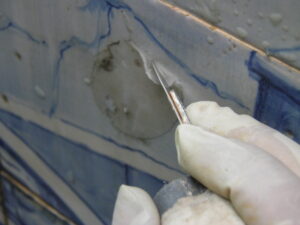
Cleaning porcelain with solvents
In this process of cleaning porcelain , various solvents are tested to achieve the best cleaning porcelain results.
Prior to the procedures, it is necessary to test with cotton swabs, moistened in a solution of water and neutral detergent, on small areas of the work.
If there is no damage, you can opt for this type of chemical cleaning.
With a piece of cotton wrapped around the end, the wooden or bamboo stick is dipped in a solution of water and neutral detergent and carefully rubbed over the piece.
This cotton should be changed constantly to keep it clean.
For larger jobs, the water and detergent solution can be applied with the help of a sprayer, and the rubbing should be done with brushes with stronger bristles.
Once this phase is over, the remaining moisture in the work should be removed with a dry cotton or cotton cloth.
When excesses remain or in cases of more calcified particles, the scalpel can be used to scrape (always being careful not to scratch the surface).
If cleaning with neutral detergent and water is not effective, use the same test procedure with other solvents.
The following video shows a cleaning process with equal parts ethyl alcohol and pure acetone.
What students say about the online course Conservation of Ceramics
You will learn the processes of alteration and systematize the methods and techniques of intervention in the restoration of ceramics .
An active method is used, illustrated with images and video tutorials of the different phases of intervention.
At the end of this online course on conservation and restoration of ceramics you will be able to recognize the main pathologies and their causes.
You will learn about internationally accepted ethical and deontological principles.
You will learn the methods, techniques and materials of intervention applicable in different situations.
You will analyse real interventions carried out by conservation and restoration technicians.

